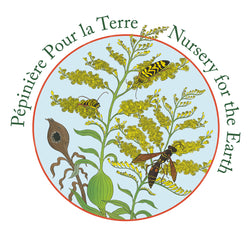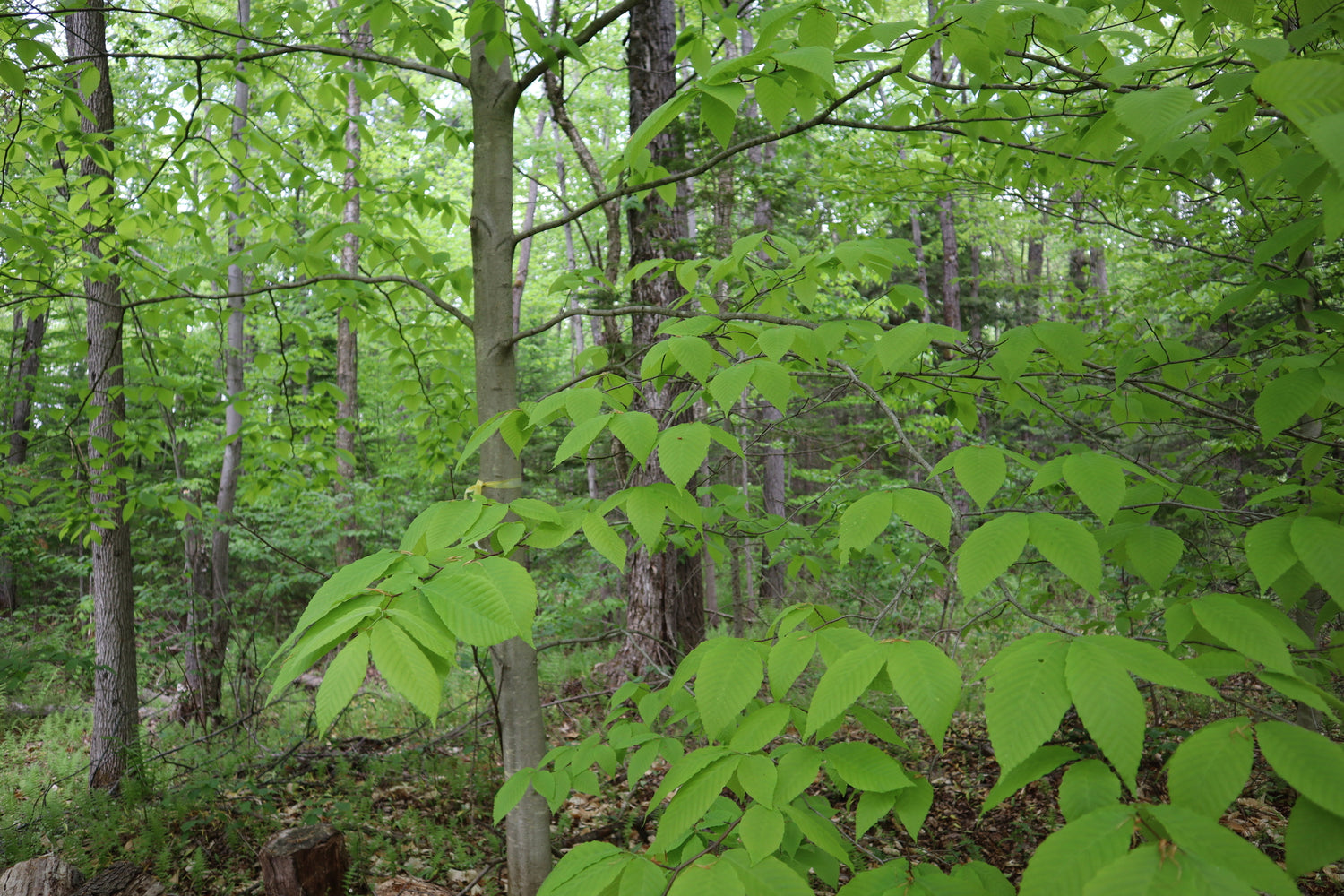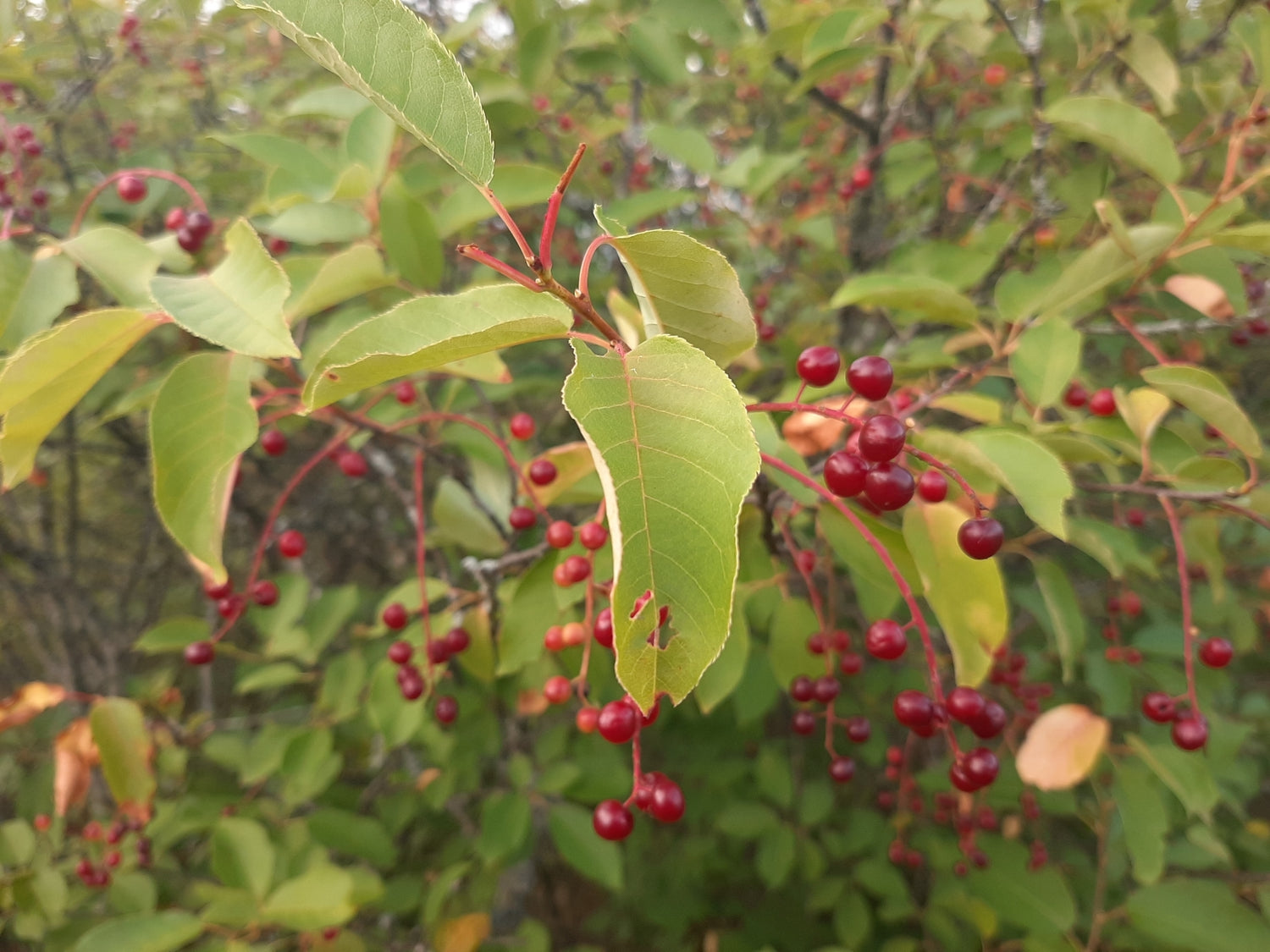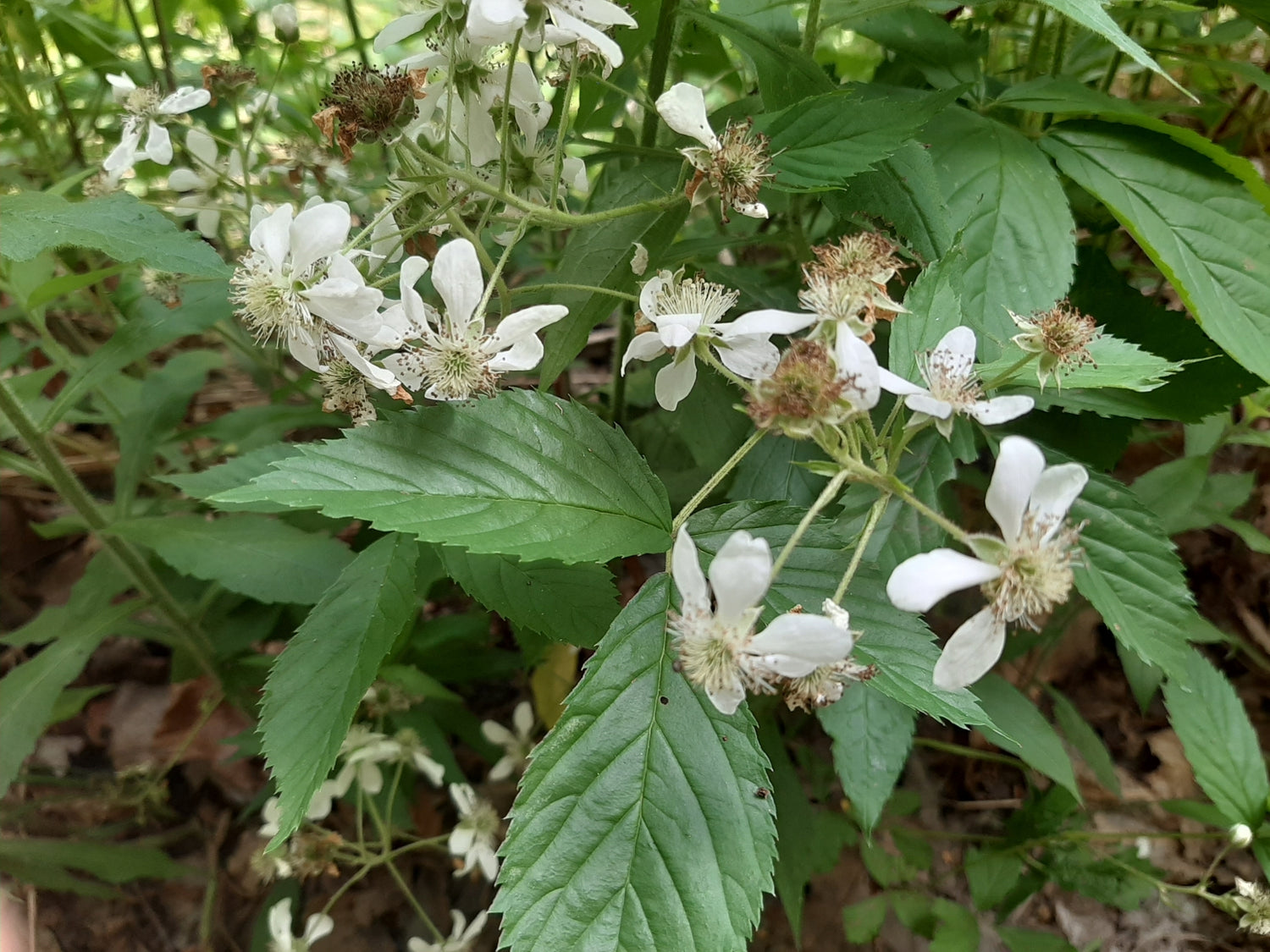Nursery for the Earth
Prunus pensylvanica (Fr: cerisier de Pennsylvanie | En: pin cherry)
Couldn't load pickup availability
Pin Cherry
Prunus pensylvanica
Alternative names: Fire Cherry, Bird Cherry (not to be confused with Prunus padus)
French: Cerisier de Pennsylvanie
Pin Cherry is our only native representative of the Prunus subgenus Cerasus—the same group as the celebrated Japanese cherry blossoms. Its springtime display of delicate white-pinkish flowers rivals any ornamental cherry and brings a touch of natural elegance to wild landscapes.
This small, fast-growing, and short-lived tree is typical of early successional forests and disturbed areas. After forest fires or windthrow, Pin Cherry often springs up en masse from long-lived seedbanks in the soil—sometimes sprouting from beneath the roots of century-old trees.
The fruit is bright red and edible, though more tart than sweet. While it is less commonly used than chokecherry or black cherry, it can be made into jams, syrups, or sauces when sweetened. As with all Prunus species, the pits should not be consumed.
Pin Cherry is a highly valuable wildlife species. It provides fruit for birds, especially frugivorous songbirds, and its leaves serve as food for a wide range of butterflies and moths. It is ideal for restoring disturbed areas, enhancing biodiversity, or planting as part of a native food forest.
Height: 5–15 m
Bloom time: Spring
Light: Full sun
Moisture: Dry to moist
Soil: Various types
Habitat: Early successional forests, dry open areas
Ecological benefits: Supports birds, host plant for Lepidoptera, early colonizer species
Edible: Fruit (cooked; pits not edible)
Share











